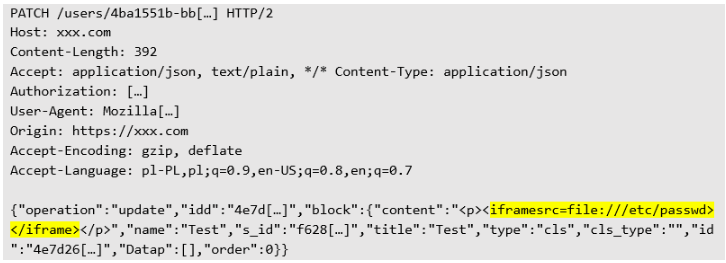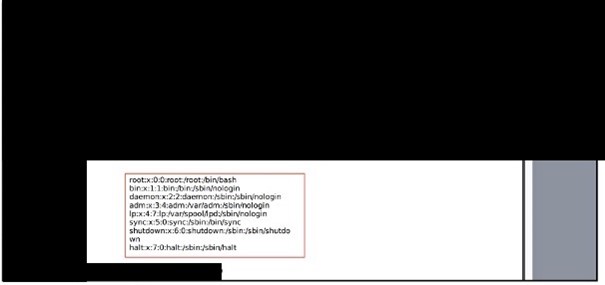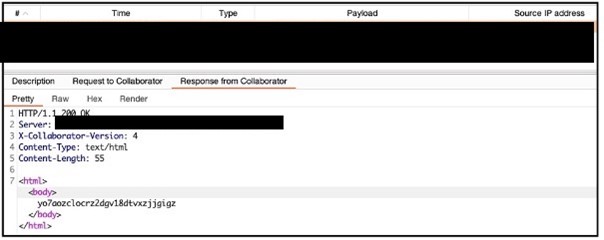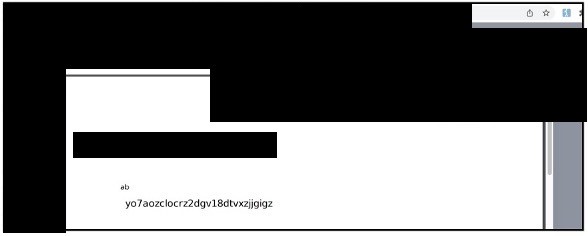
Pentest Chronicles
Exploiting PDF generation vulnerability: a case study from real pentest

Securitum
June 05, 2024
Prerequisites for the Attack To exploit this vulnerability, an attacker must have a valid user account within the application. This access level is necessary to interact with specific application functionalities and craft the malicious payload.
This vulnerability was identified in the PDF generation component of the application. The inadequate validation of user-input data in this feature is the root cause.
Technical Details and Proof of Concept Case #1: Unauthorized File Reading
Our test demonstrated the ability to read arbitrary files from the server by injecting HTML payloads. Here are the steps taken:
1. Authentication: Log in to the application using any user account.
2. Navigation: Navigate to the 'Users' page.
3. Payload Injection: Edit any part of a user profile, save the changes, capture the outgoing request, and inject the following HTML payload into the request:

4. Execution: Click the 'Preview PDF' button.
5. Result: The application generates a PDF file containing the contents of the /etc/passwdfile revealing sensitive server information.
 Case #2: Interaction with Attacker’s Host
Case #2: Interaction with Attacker’s Host
A similar approach can be used to interact with an external attacker-controlled server:
1. Follow Steps 1-3 as in Case #1.
2. Payload: We can use the following payload instead:
 3. Result: The application interacts with the attacker’s server.
3. Result: The application interacts with the attacker’s server.

 Recommendations To mitigate this vulnerability, we recommend implementing the following measures:
Recommendations To mitigate this vulnerability, we recommend implementing the following measures:
1. Input Validation: Enhance the input validation mechanism to restrict access only to pre-approved resources. Implement a whitelist of acceptable locations.
2. HTML Sanitization: Disable HTML parsing or enable sanitization of HTML tags in the library responsible for generating PDF files. This measure will prevent the injection of malicious content.
Conclusion The discovery of this vulnerability highlights the importance of rigorous input validation and sanitization in web applications. By addressing these issues, organizations can significantly improve their security posture and protect sensitive information from unauthorized access.
#CyberSecurity #WebSecurity #PenetrationTesting #InfoSec #DataProtection #PentestChronicles
Next Pentest Chronicles

When Usernames Become Passwords: A Real-World Case Study of Weak Password Practices
Michał WNękowicz
9 June 2023
In today's world, ensuring the security of our accounts is more crucial than ever. Just as keys protect the doors to our homes, passwords serve as the first line of defense for our data and assets. It's easy to assume that technical individuals, such as developers and IT professionals, always use strong, unique passwords to keep ...

SOCMINT – or rather OSINT of social media
Tomasz Turba
October 15 2022
SOCMINT is the process of gathering and analyzing the information collected from various social networks, channels and communication groups in order to track down an object, gather as much partial data as possible, and potentially to understand its operation. All this in order to analyze the collected information and to achieve that goal by making …

PyScript – or rather Python in your browser + what can be done with it?
michał bentkowski
10 september 2022
PyScript – or rather Python in your browser + what can be done with it? A few days ago, the Anaconda project announced the PyScript framework, which allows Python code to be executed directly in the browser. Additionally, it also covers its integration with HTML and JS code. An execution of the Python code in …


